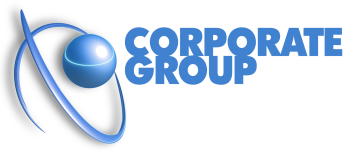There is evidence that many individuals in the American workforce will fall short when it comes to saving for retirement. One step employers can take is to educate employees and encourage them to make the most of employer managed plans available to them. Incorporating a Roth 401K helps companies stay competitive and supports employees of all ages.
Incorporating the Roth 401K plan into a benefits program
The Roth 401K was introduced as a retirement savings option in 2006 as part of the Economic Growth and Tax Relief Reconciliation Act of 2001. Since then, many companies added the plan to their benefits package. It offers an exceptional combination of savings features from both the Roth IRA and Traditional 401K accounts. Some aspects include: Tax free growth and distribution, employer funded matching, and a provision for “catch up” contributions.
Roth 401K helps companies stay competitive and benefits employees
- Today’s market finds companies competing for a limited pool of qualified resources. A well-rounded benefits package, that includes the Roth 401K as an additional option for retirement savings, can make a difference and convert candidates into new hires.
- The affiliated IRS tax codes benefit both a younger and older workforce. Younger employees in a lower tax bracket will see significant savings when the time comes for fund distribution. Older higher-income workers can maximize post-tax contributions vs. what a Roth IRA would allow ($17,500 for those under age 50, and $23,000 for those 50 and over for tax year 2014.)
- The Roth 401K allows employer matching. Company funded contributions can be considered as part of an overall compensation package. Payments add pre-tax dollars to a retirement plan that are not included in the elective deferral cap (maximum limit $51,000 for 2013.)
- Benefits are not lost. Unlike pension plans which require continual employment for a lengthy period, employee fed contributions are transferable when employment ends. Funds in a Roth 401K may only be transferred to a Roth IRA, thus retaining the tax benefits.
Comparison of Retirement Savings Plans
|
Roth 401K |
Traditional 401K |
Roth IRA |
|
| Before or after-tax contribution |
After |
Before |
After |
| Tax deductible |
No |
Yes* |
No |
| Tax free growth and distribution |
Yes |
No |
Yes |
| Contribution limits based on income |
No |
No† |
Yes |
| Contribution limit |
$17,500 |
$17,500 |
$5,500 |
| Eligible for employer matching |
Yes |
Yes |
Yes |
| Employer contributed funds tax deferred |
Yes |
Yes |
Yes |
| Contribution eligibility ends |
at age 70 ½ |
at age 70 ½ |
None** |
| Mandatory distribution |
at age 70 ½ |
at age 70 ½ |
No |
| Transferability |
Only to a |
Can transfer to |
Only to another |
| Great for younger workforce†† |
Yes |
Yes |
Yes |
| Great for higher earning workforce†† |
Yes |
Yes |
Yes |
| *Depending upon your gross income **As long as income is earned † Highly compensated employees restricted to ave. deferral percentage of non-highly compensated employees (see IRS tax codes) †† In general, a savings plan for retirement at any age or income, is a good plan | |||
Incorporating the Roth 401K into an employer benefit plan is advantageous for everyone. Employers have an added bargaining chip while negotiating a hiring package and employees may now more cost-effectively bridge the gap between where they are in saving for retirement and where they need to be.
The information presented is merely a summary of the benefits of adding a Roth401K to an HR benefits package, and the differences between the various retirement savings plans. Consult your HR manager or financial planning professional before making any decisions.
